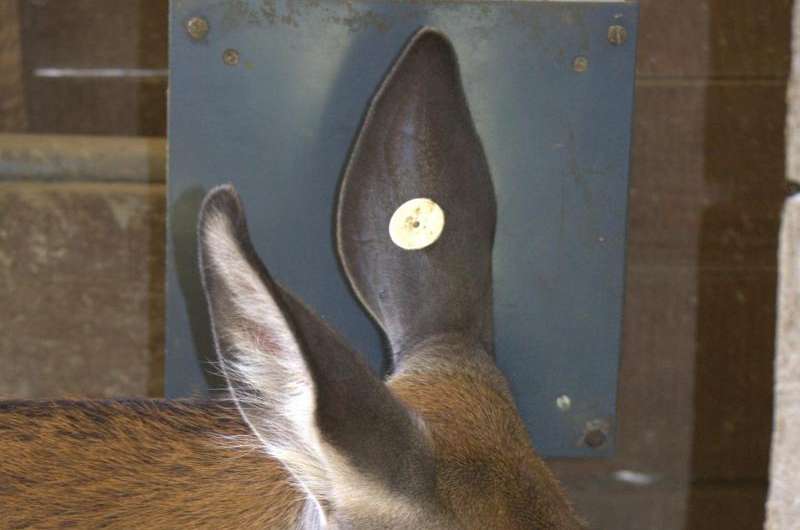Red deer make more out of less food during winter

During the winter season, northern-latitude herbivores must cope with a food supply that is both restricted and of poorer quality. The ability of red deer to handle these extreme situations was the focus of a study conducted by the Research Institute of Wildlife Ecology at the Vetmeduni Vienna in cooperation with the Hannover University of Veterinary Medicine. The study revealed that, even when good food is readily available, the animals eat only half as much in the winter as in the summer. They reduce the size of their gastrointestinal tract and extract nutrients more efficiently. The results were published in the American Journal of Physiology.
A feeding experiment with 16 female red deer was performed over a period of three years to investigate possible seasonal differences in how the animals regulate their food intake and nutrient uptake.
Red deer reduce winter food intake by half
Despite an unlimited availability of food pellets, normally a much-liked food for the deer, the animals ate only half as much a day during the winter as they did in the summer. At the same time, the mass of the animals' visceral organs was significantly lower. "Reduced appetite in winter apparently helps the red deer to avoid time and energy expenditure for unproductive search for food," says first author Walter Arnold, head of the Research Institute for Wildlife Ecology. "A lower food intake leads to a smaller gastrointestinal tract, which in turn helps to save energy."
More efficient nutrient uptake in winter
Studying the active uptake of glucose and proteins from the digested food via the intestinal mucosa revealed that the nutrient transport rates are increased during the winter relative to the summer.
Proof was delivered using two independent methods: The first was performed indirectly through the electrophysiological measurement of the nutrient transport in the fresh, active intestinal tissue of hunted deer. The second was done through direct measurement of nutrient uptake via the cell membrane of the intestinal mucosa cells. This method involved the isolation of cell membranes from the intestinal mucosa, which in the test tube formed vesicles containing functioning transport proteins. These proteins transported radioactively marked nutrients faster in vesicular membranes that were prepared from the intestinal cells of winter animals.
The intense digestion was also indicated by the lower concentration of crude proteins in the faeces of winter animals versus the summer animals despite similar levels of crude protein intake.
"The red deer maximally exploited the scarcely available and energetically low winter food. Every calorie counts, as the energy balance in winter is notoriously negative and body fat reserves are available only to a limited degree," says Arnold.
Winter food contains a lower amount of nutrients
"The extraction of nutrients from food is more efficient in winter than in summer. Red deer take in less and nutrient-poor forage in winter but exploit this to the maximum. Every calorie counts, because the energy balance is notoriously negative in winter, and fat reserves are limited," Arnold explains. "In the summer red deer don´t spend much time on digesting food. They maximise energy uptake by eating a lot and quickly making room for more food, since they can easily access food resources during the summer."
More information: Walter Arnold et al. Contrary seasonal changes of rates of nutrient uptake, organ mass, and voluntary food intake in red deer ( ) , American Journal of Physiology - Regulatory, Integrative and Comparative Physiology (2015). DOI: 10.1152/ajpregu.00084.2015
Journal information: American Journal of Physiology
Provided by University of Veterinary Medicine—Vienna


















